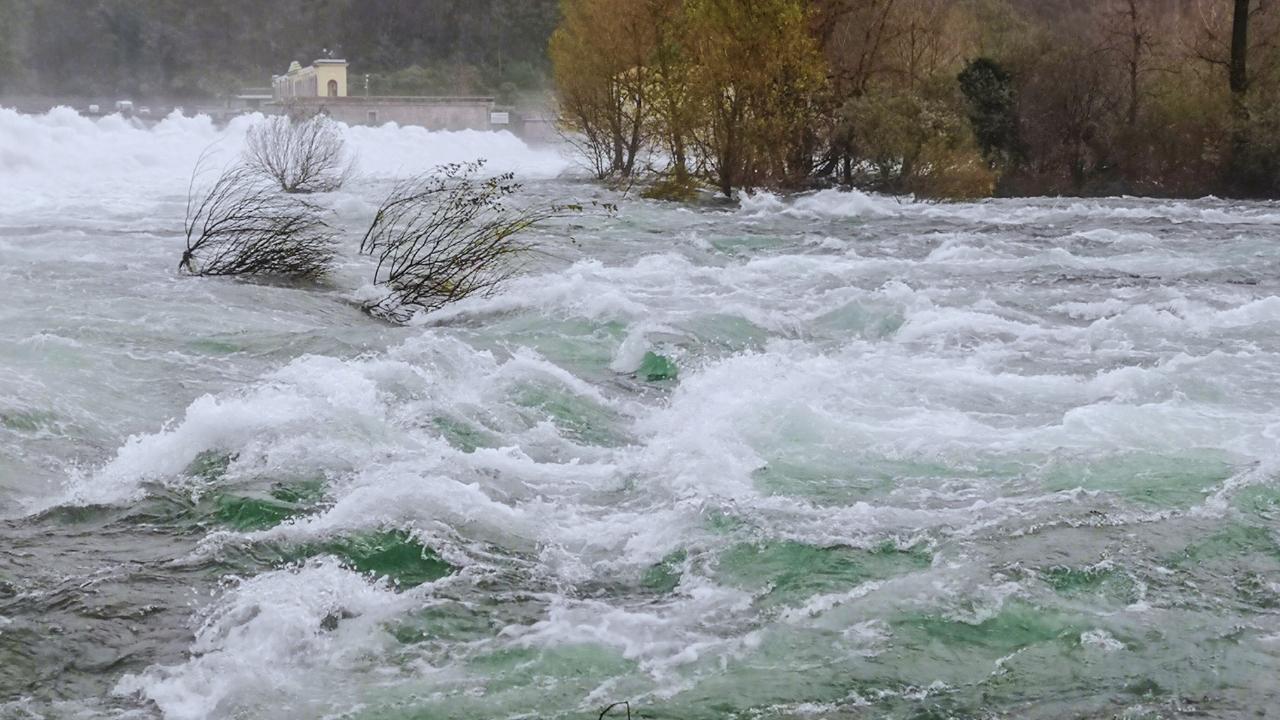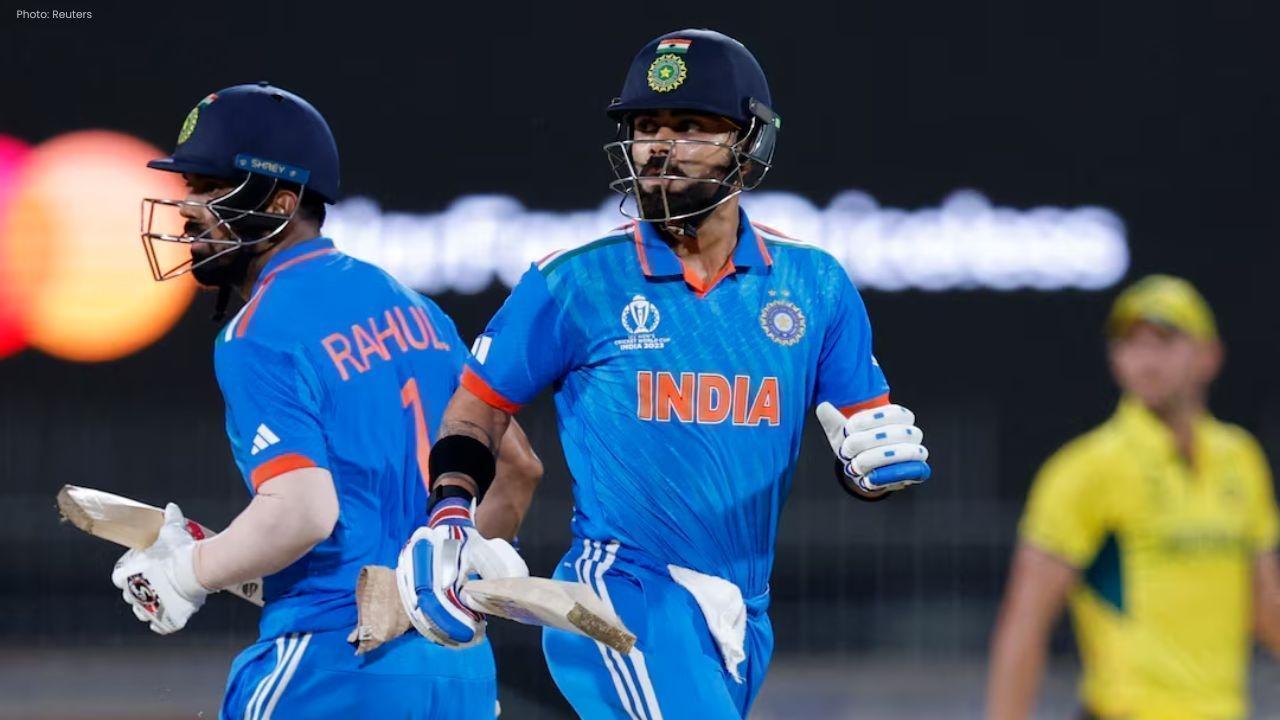
Join 10k+ people to get notified about new posts, news and tips.
Do not worry we don't spam!

Post by : Anis Farhan
Asia, home to over half of the world's population, is facing an environmental reckoning. From the cloudbursts in India’s Uttarakhand to record-breaking deluges in Hong Kong and South Korea, the region is witnessing a surge in flash floods and extreme weather events with alarming frequency and intensity. What was once termed as "unseasonal rain" has now become a persistent, destructive pattern of nature asserting its dominance—signaling a climate emergency that can no longer be ignored.
In July 2025, Hong Kong recorded its highest single-day rainfall in over 140 years. Within hours, the bustling financial hub resembled a waterlogged maze. Roads turned into rivers, metro lines were shut down, and emergency crews worked through the night rescuing trapped commuters. Meanwhile, in India’s hilly state of Uttarakhand, torrential rains triggered flash floods and landslides that swept away entire villages, killed dozens, and left thousands homeless. These aren’t isolated incidents—they’re symptomatic of a much larger crisis unfolding across Asia.
Climate experts warn that the increase in frequency and intensity of such events is directly linked to global warming. Warmer temperatures lead to greater evaporation, which increases atmospheric moisture. When this moisture-laden air meets a trigger like a weather front or mountainous terrain, it results in extreme downpours within a very short span of time—a textbook case of flash flooding.
In Asia, the geographical diversity—from low-lying deltas in Bangladesh to Himalayan valleys in Nepal and India—makes the region uniquely vulnerable. These terrains amplify the destructiveness of flash floods, especially when coupled with unplanned urban development and deforestation.
Cities like Jakarta, Manila, Mumbai, and Bangkok are expanding rapidly but often without sufficient planning for stormwater drainage or emergency preparedness. Concrete jungles replace absorbent green zones, and old drainage systems fail under new climate stress.
Take Mumbai for instance. Every monsoon season, the financial capital of India grapples with waist-deep water on major roads, delayed trains, and flooded homes. A 2005 deluge that killed over 1,000 people should have been a wake-up call. Yet, two decades later, the core vulnerabilities remain unchanged.
Similarly, Hong Kong’s modern infrastructure couldn't withstand the 2025 rains. Although better equipped than many cities in terms of disaster response, even it faltered under the volume of rainfall. It begs the question: If developed cities are drowning, what chance do poorer ones have?
In Himalayan regions like Uttarakhand and Nepal, the impact of flash floods is more catastrophic. These areas are prone to landslides, and when heavy rains arrive, the already unstable terrain crumbles. Roads, bridges, and homes vanish in minutes. Compounding this is the proliferation of hydroelectric projects in fragile zones, which disturb the ecological balance and exacerbate disaster risks.
Just weeks ago, several villages in the Rudraprayag district of Uttarakhand were cut off for days due to collapsed roads and landslides. Rescue helicopters faced poor visibility and mechanical hurdles, leaving survivors with no access to food or medicine.
The financial implications are staggering. According to estimates by the Asian Development Bank, natural disasters cost Asia over $40 billion annually. Flash floods alone contribute a significant chunk. They disrupt agriculture, destroy infrastructure, paralyze urban economies, and cause long-term mental and physical health issues in affected populations.
For developing nations still grappling with post-pandemic economic recovery, these events are doubly devastating. Insurance coverage is limited, reconstruction takes years, and affected families often fall deeper into poverty.
In the face of recurring floods, public frustration is mounting. Citizens across Asia are increasingly demanding accountability and proactive climate action. Social media is rife with videos of people wading through flooded train stations, crumbling highways, and submerged cars—often accompanied by captions questioning governmental preparedness.
In India, the National Disaster Response Force has been lauded for its quick deployments, but critics argue that reactive measures aren’t enough. In South Korea, opposition leaders have slammed the administration for ignoring flood-risk assessments and prioritizing real estate over resilience.
The solution lies not in temporary relief measures but in long-term climate adaptation and mitigation strategies. These include:
Building permeable pavements and rainwater harvesting systems in urban areas
Updating drainage and sewer infrastructure
Implementing early warning systems using AI and satellite data
Strictly enforcing zoning regulations in ecologically sensitive zones
Investing in natural flood barriers like mangroves, wetlands, and afforestation projects
Some progress is being made. Japan has led the way with its underground flood diversion facilities like the G-Cans Project in Tokyo. Singapore’s Marina Barrage is another example of how engineering can harmonize with nature. But scaling such innovations across diverse and less wealthy parts of Asia remains a monumental challenge.
Beyond the statistics and policies lie real stories—families who lost loved ones, farmers who saw their crops vanish overnight, and schoolchildren who waded through chest-high waters just to reach safety. These stories highlight that climate change isn’t a future threat—it’s a present crisis.
Mental health support for flood survivors is critically lacking. PTSD, anxiety, and displacement trauma are common among those repeatedly affected. Emergency shelters and rehabilitation centers often focus on physical needs but overlook emotional recovery.
Mainstream media has increased its climate coverage, but misinformation and climate denial still find a foothold. Governments and news agencies must collaborate to educate the public, not just during disasters but consistently. Awareness campaigns about flood preparedness, evacuation protocols, and early warning apps can save lives.
Moreover, schools and workplaces must integrate climate education to foster a generation that understands both the causes and consequences of these natural disasters.
Flash floods do not respect borders. Rivers flow through countries, monsoons blanket entire regions, and climate impacts ripple far beyond any single nation. Thus, a regional framework for disaster resilience is not just ideal—it’s necessary.
The South Asian Association for Regional Cooperation (SAARC) and ASEAN must go beyond declarations and facilitate joint forecasting models, shared rescue training programs, and climate financing mechanisms. Bilateral cooperation between nations like India and Nepal on river management can prevent downstream disasters.
Asia is at a crossroads. It can either treat flash floods as isolated misfortunes or recognize them as the most urgent symptom of an accelerating climate crisis. The latter demands serious introspection, financial investment, political will, and societal commitment.
The floods in Hong Kong, Uttarakhand, South Korea, and other regions are not merely "natural disasters." They are human tragedies amplified by climate negligence. Without swift and collective action, Asia risks normalizing devastation—flood after flood, loss after loss.
This article is a factual and analytical representation based on recent flooding events across Asia. It is intended for informational and editorial purposes under Newsible Asia’s guidelines. The content does not endorse or criticize any specific policy or government but highlights the urgency of climate action.










Paramount+ to Stream PBR’s 'Unleash the Beast' in New Five-Year Deal
Paramount+ will stream PBR’s 'Unleash the Beast' across the U.S. starting this December under a five

Zohran Mamdani Clinches NYC Mayoral Seat as Victory Speech Blends Politics and Bollywood
Zohran Mamdani won New York City's mayoral race, becoming the city's first Muslim and South Asian ma

India Wins First Women’s World Cup 2025 Title
India lifts its maiden Women’s World Cup 2025 title! Harmanpreet Kaur’s team stuns South Africa in a

Manuel Frederick, 1972 Olympic Bronze Goalkeeper, Dies at 78
Manuel Frederick, a member of India’s 1972 Olympic bronze hockey team, has died in Bengaluru at 78 a

Muhammad Hamza Raja Wins IFBB Pro Card Puts Pakistan & UAE on Global Stage
Pakistani bodybuilder Muhammad Hamza Raja earns IFBB Pro Card in Czech Republic, showcasing Dubai’s

Shreyas Iyer’s Recovery Underway After Spleen Laceration in Sydney ODI
Shreyas Iyer is recovering after a spleen laceration sustained while taking a catch in the Sydney OD